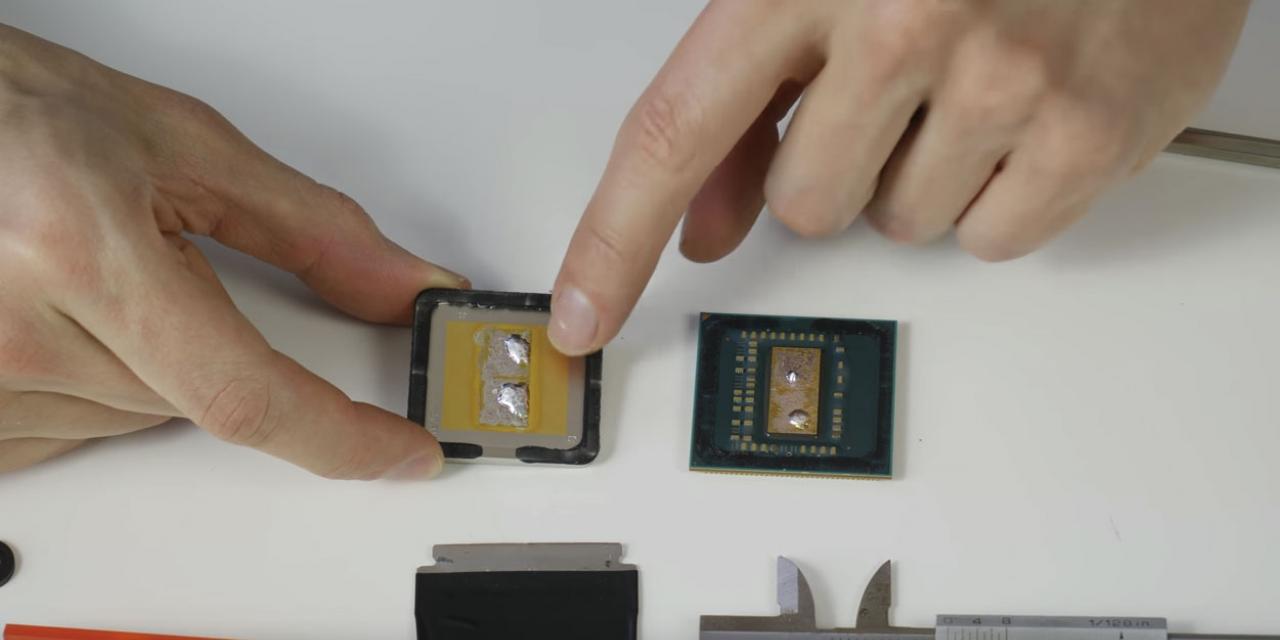
One of the more advanced methods of bringing down CPU temperatures has, for years, been delidding. The practice involves (very) carefully removing the internal heatspreader (IHS) with specialized tools or razer blades and removing the big metal component of your CPU so you can replace the poor heat paste solution inside the chip itself. Usually this nets quite big gains in CPU cooling ability, but not in the case of AMD's Ryzen 5 2600 it seems. One overclocker took a stab at it and ultimately only shaved a few degrees off of the top load temperature during benchmarking.
The reason for this is likely because AMD takes its internal heat paste a little more seriously than some with the 2000 series chips. When overclocker der8auer delidded his 2600, he had to contend with soldered indium. That not only helps provide a direct, metal to metal contact for the heatspreader but also holds the whole chip together. To take it apart to get at the core itself, der8auer had to turn up the temperature for the heatsink to 180 degrees celsius, where indium melts.
When done so, he was able to delid the chip using a customized version of his own branded delidding tool to get at the internal core of the 2600 itself. Noting that it was the same physical dimensions as AMD's previous-generation Ryzen chips, der8auer then applied his favorite liquid metal thermal paste and put it all back together, before running some benchmarks.
Ultimately the temperatures dropped from 64 degrees celsius at load when overclocked to 4.1GHz at 1.35v, to 60 degrees. Not really worth all of the effort, though perhaps for serious overclockers it will help increase clocks a little more.
Have any of you guys ever delidded a CPU?








